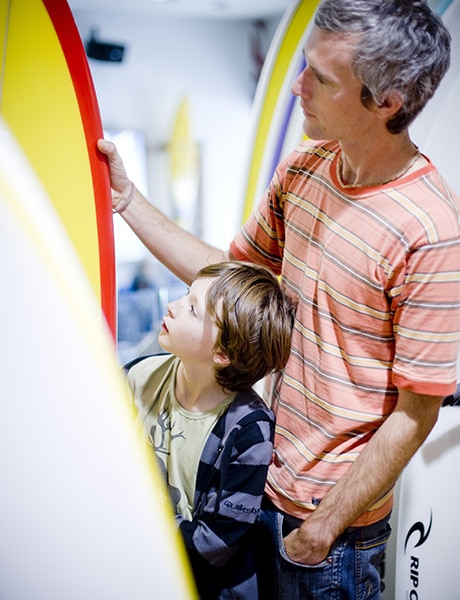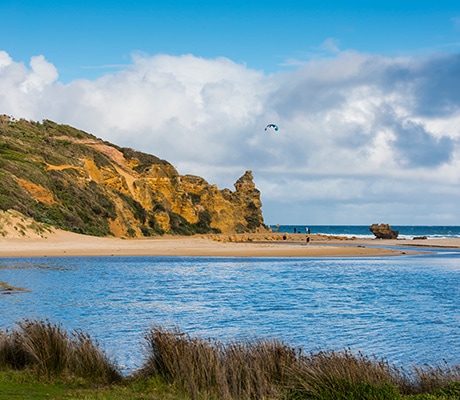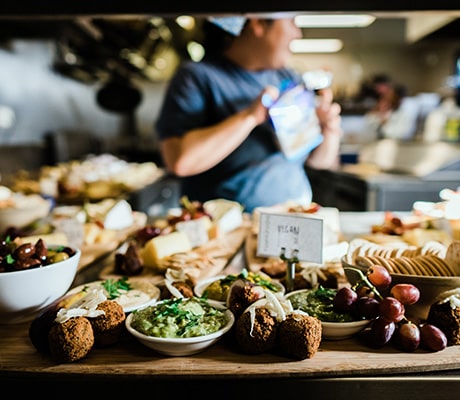June 04, 2021
![]() 8 mins Read
8 mins Read
There’s so much more to the Great Ocean Road than meets the eye; all you have to do is know where to look. Discover a different side of Australia’s most famous road trip and explore the beaches and towns of the Surf Coast the way the locals do.

Discover a different side of Australia’s most famous road trip.
Celebrate everything that’s great about road-tripping along Australian Surf Coast with a look back at how it all began at the Australian National Surfing Museum in Torquay. The largest surfing museum in the world, it’s a temple to wave riding and the culture that evolved with the sport.

The Australian National Surfing Museum in Torquay is the largest surfing museum in the world.
There’s plenty of surfing history on show, and lots of surfboards, too – some of the biggest names in surfwear, such as Rip Curl and Quiksilver, started here in Torquay (one in four locals are employed full-time in the surf industry) – as well as lots of films, surf music and surfing memorabilia.
But the real reason to visit is for the Waves and Wheels exhibition about surfers and their cars, and the road trips they took, the Great Ocean Road being up there with the biggest and best of course.

Some of the biggest names in surf wear, such as Rip Curl and Quiksilver, started in Torquay.
Torquay is a great place to shop for surf gear, with lots of outlet shops in Surf City Plaza and around town. And if all this surfing action gets you keen to try it out, the crew at Torquay Surf Academy are locals and always know the best places to go according to the waves on the day.

Torquay is a great place to shop for surf gear.
The most famous surf beach of them all is just up the road. Bells Beach is home of the world’s longest running professional surfing event, the Rip Curl Pro (held over Easter each year) and on most days you can watch the experts ride the waves.
You can drive to Bells, but if you really want to tune into the vibe, the Surf Coast Walk follows the trail blazed by the surfing pioneers.

Bells Beach is the most famous surf beach of them all.
The entire walk stretches 44 kilometres from Torquay all the way to Aireys Inlet, but there are 12 trailheads along the way so you don’t need to do it all.
Wherever you pick it up you’ll find gorgeous clifftop views, as well as tracks and staircases that lead to hidden beaches that only the locals know about, such as the one that winds down the sandstone cliffs to Jan Juc just on the edge of Torquay.

The Surf Coast Walk stretches 44 kilometres from Torquay all the way to Aireys Inlet.
Point Addis is another magic spot – go at dusk and chances are it will just be you and resident kangaroos grazing the hillsides.
The Great Ocean Road might be all about road-tripping beside the sea, but the rivers that spill into the ocean along its length are some of the most underrated spots along this scenic touring route.
Anglesea, just 20 kilometres west of Torquay, at the mouth of the Anglesea River, is one of those places.
Take a stroll along the riverside boardwalk, stop for lunch at Last One Inn – this waterfront weatherboard restaurant was a popular burger spot, but has just reinvented itself as a South American-flavoured bistro: the fish tacos are divine and the view is priceless.

Stop for lunch at Last One Inn: the fish tacos are a must!
Wash it down with a post-lunch dip – the surf beach is just round the corner. If you’re there after dark, expect lots of lively Latin music and dancing.
Play a round of golf with kangaroos – there are about 300 eastern greys that hang out on the Anglesea Golf Course. If you’re living the van life, Angelsea Family Caravan Park is perched on a point overlooking both the river and sea.
The Angelsea Riverside Motel has just been restored to its mid-century motel glory – so retro, so cool.

Anglesea is one of the most underrated spots along the Great Ocean Road.
Aireys Inlet, 10 minutes’ drive further down the Great Ocean Road, is another similarly underrated spot. The red-capped lighthouse here is a big attraction – if you (or your kids) were fans of the long-running TV show, Round the Twist, you’ll want to take a tour.
The clifftop walking trail that starts in the lighthouse precinct (it’s the end of the Great Coast Walk) delivers sensational views.

Witness sensational views from Aireys Inlet.
Go for a paddle in Painkalac Creek, explore the rock pools of Eagle Rock Marine Sanctuary, go for a gallop along the beach with Blazing Saddles Trail Rides, follow the walking tracks to one of the town’s five beaches, or enjoy a cold drink in the sun at Salt Brewing at the Airey’s Pub, one of the best beer gardens in the state.

Paddle along the Angelsea River.
Not far from Airey’s Inlet is the Memorial Arch. Celebrating 100 years since construction first began in 1919, the Great Ocean Road was the first road in Australia that was purpose-built as a scenic tourist route.
It would be easy to think it was always just about the views, but it’s actually the world’s longest war memorial. It was built by soldiers who survived the battlefields of the First World War in honour of their fallen mates, and they carved out the road, using mainly picks and shovels, buckets and wheelbarrows.

The famous red-capped lighthouse in the distance at Aireys Inlet.
It took them 13 years to finish the road. Look closely at the roadsides and you’ll find brass plaques at lookouts and rest areas detailing the history of the construction and the wartime stories of the men who built it, and many of the place names are dedicated to lost heroes.
A guide to the 14 plaques is available from Great Ocean Road Heritage Centre inside the Lorne Visitor Centre, which also has an exhibition that tells the story of how the famous road was built.
Even before the Lorne section of the Great Ocean Road was opened in 1922 travellers had been flocking to seaside Lorne to enjoy sea baths and fresh air, arriving by boat from Melbourne.
Today there is a range of accommodation option

A bedroom at the Lorne Hotel, opposite the beach. (Image Lorne Hotel)
s include the classic Australian style Lorne Hotel opposite the beach – offering rooms for couples and even family apartments all above the beer garden.

One of the four bedrooms at Lorne boutique hotel, La Perouse. (Image La Perouse)
More upmarket would be La Perouse, a four bedroom boutique hotel within walking distance of the beach and shops and a terrace overlooking the sea for breakfast.
You can still swim in sea baths, too, although I doubt th
re would have been trampolines back in 1872.
For more high-flying thrills, the Live Wire Park has Australia’s most extreme outdoor adventures – called the shockwave zip coaster it’s a cross between a zipline and a roller coaster that winds around the treetops and it’s guaranteed to make even the most fearless hold their breath.
There are also two treetop rope circuits – one specifically for little kids – and an elevated walkway suspended in the canopy.

Live Wire Park has Australia’s most extreme outdoor adventures.
Live Wire Park is only a couple of kilometres from the centre of Lorne, on the way to Erskine Falls.
These 30-metre-high falls surrounded by rainforest are one of the hinterland’s most beautiful spots, but ask a local for their favourite and they will probably point you towards Kalimna Falls, where you can follow an historic timber tramway through the rainforest and into a cave behind the falls where you can peer though the curtain of water. On a hot summer’s day it’s is a much cooler place to be than the beach.

Erskine Falls is one of the hinterland’s most beautiful spots.
Other local spots to hang out away from the crowds include Lorne Scenic Beach at the mouth of the St George River just west of Lorne, Cumberland River – there’s a great camping area here in the shadow of some cliffs where you can pitch a tent right on the water’s edge, and Wye River, where the breakfast of avocado with pickled fennel on dark rye at Wye General is well and truly worth the drive, wherever it is you’ve come from.

Breakfast at Wye General is well and truly worth the drive, wherever it is you’ve come from.
For the  best travel inspiration delivered straight to your door.
best travel inspiration delivered straight to your door.
LEAVE YOUR COMMENT